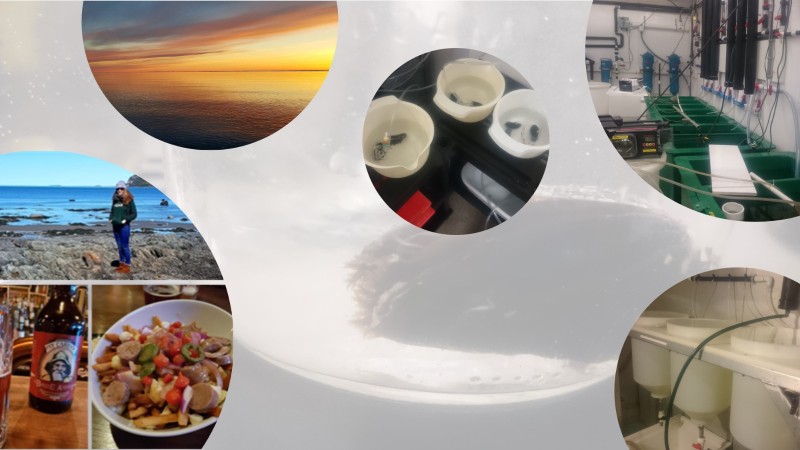From May 23, 2017 to June 5, 2019

During my PhD I had the opportunity to conduct several experiments in ISMER-UQAR (Rimouski, Canada) thanks to the GHaNA project. My PhD work focused on the biological activities of marennine, the blue water-soluble pigment produced by the diatom Haslea ostrearia.
The aim of my 5-month secondment in Rimouski was to study the effects of marennine on the survival and development of mussel larvae at different developmental stages. I have conducted my experiments in both the ISMER aquaculture station at Pointe-au-Père and the UQAR-ISMER laboratories in the campus. In the aquaculture station, H. ostrearia can be cultured at large scale which allows obtaining significant amount of marennine to conduct biological assays with. I have been working in the aquaculture station with sexually mature mussels and triggered the spawn to collect male and female gametes and proceed to fecundation in order to work with mussel embryos or larvae. The aquaculture station facilities allow to culture mussel larvae in standardized conditions, to avoid contamination and also to culture the microalgae needed for larval growth. In UQAR-ISMER laboratories I was able to use very recent laboratory equipments (such as flow cytometer) and benefit from the GHaNA grant to conduct biomolecular experiments and buy all the materiel needed. I had the opportunity to work with researchers, technicians or PhD students from different fields which really expanded my professional network.
The results from these experiments were published in the journal Aquatic Toxicology (Falaise et al. 2019) and also presented in various international congress such as Physiomar (Cambridge, 2017), the International Conference on Harmful Algae (Nantes, 2018) or the British Phycological Society (Oban, 2019).
